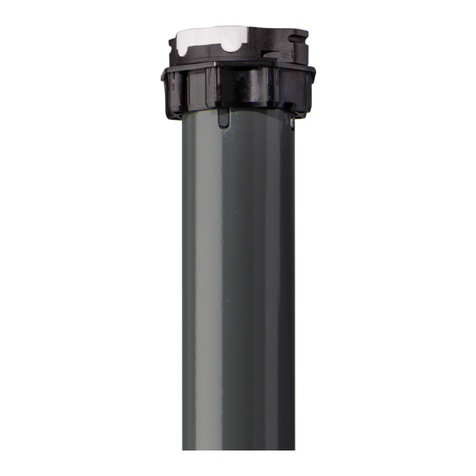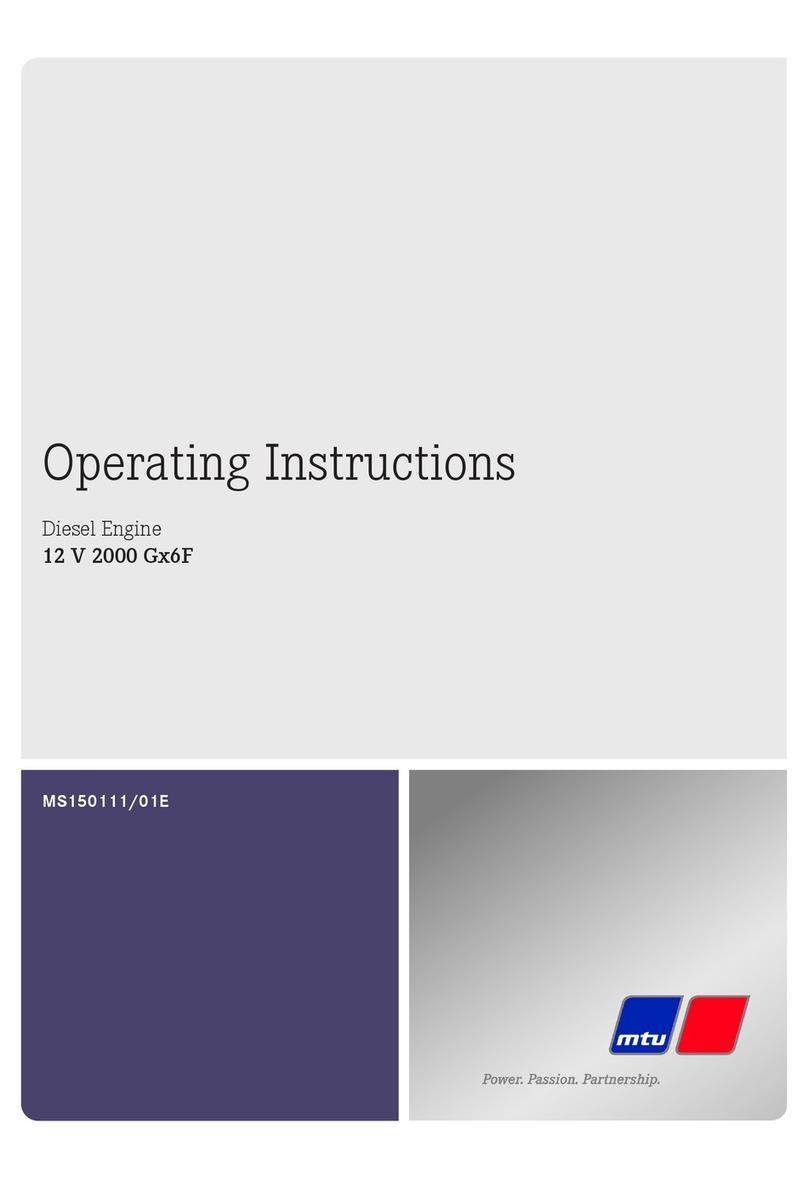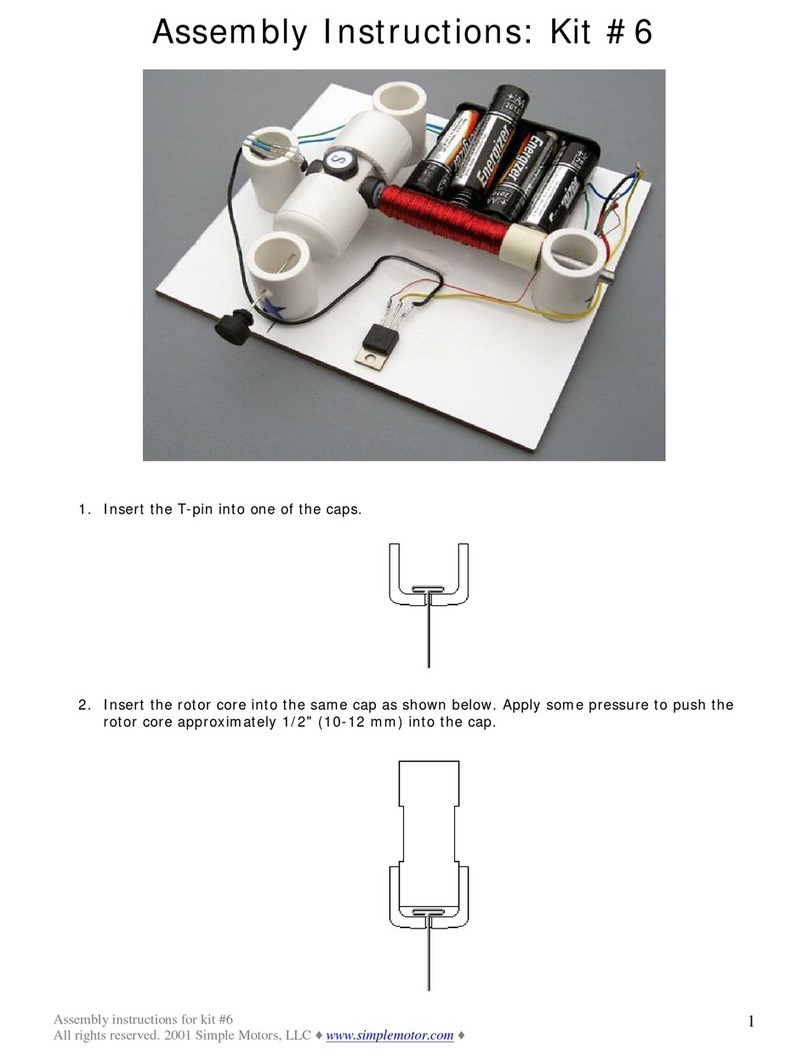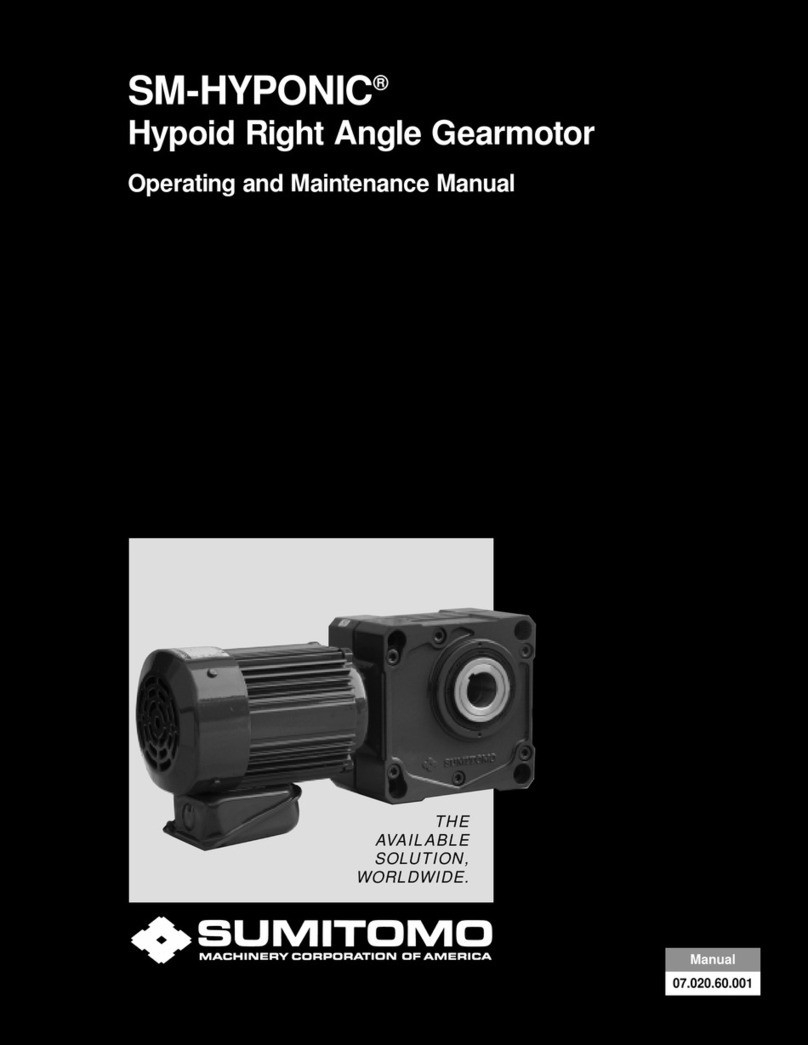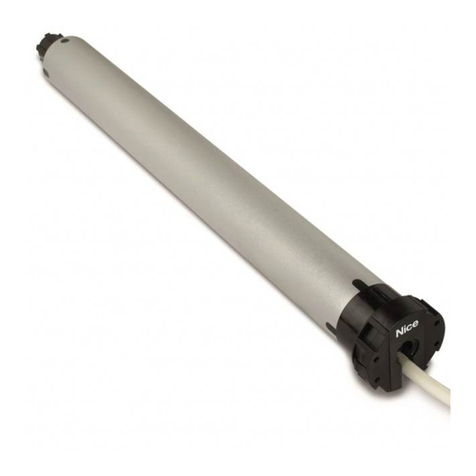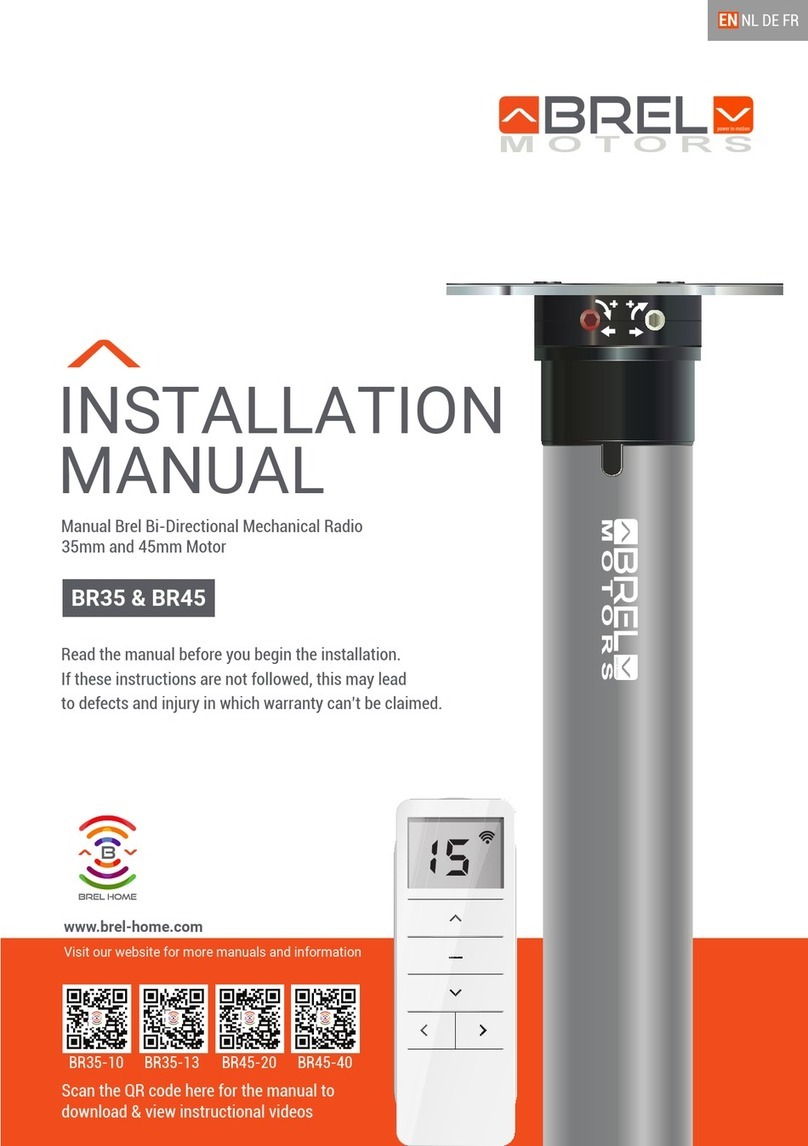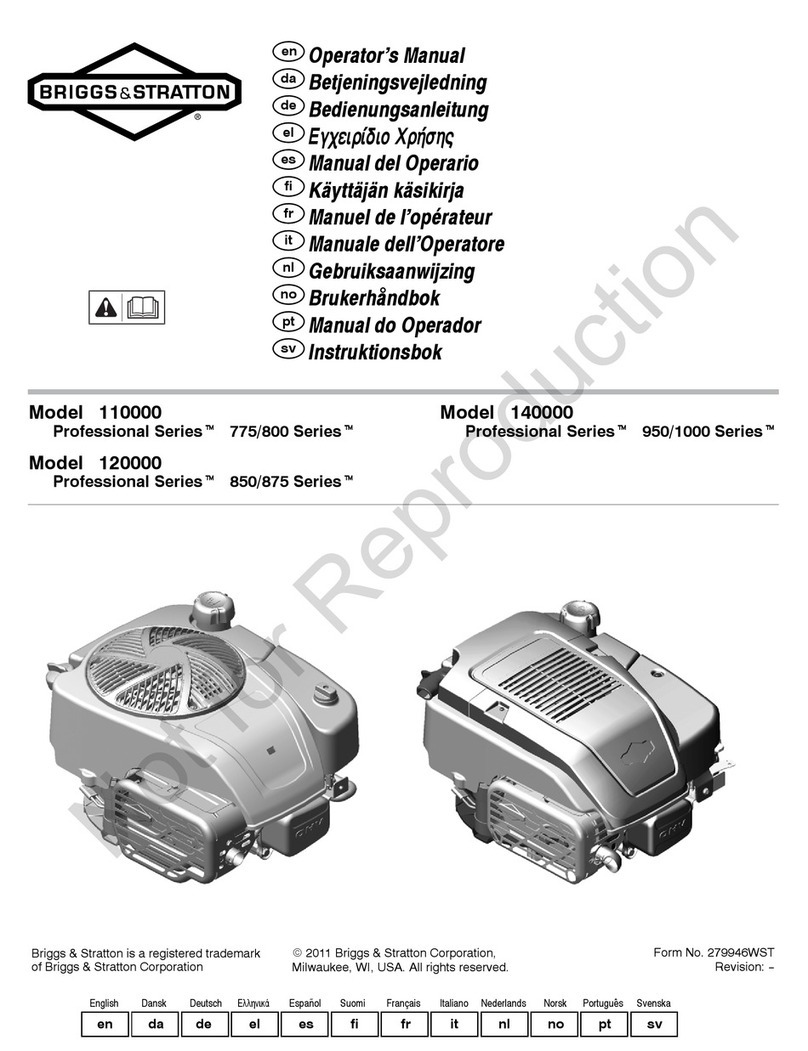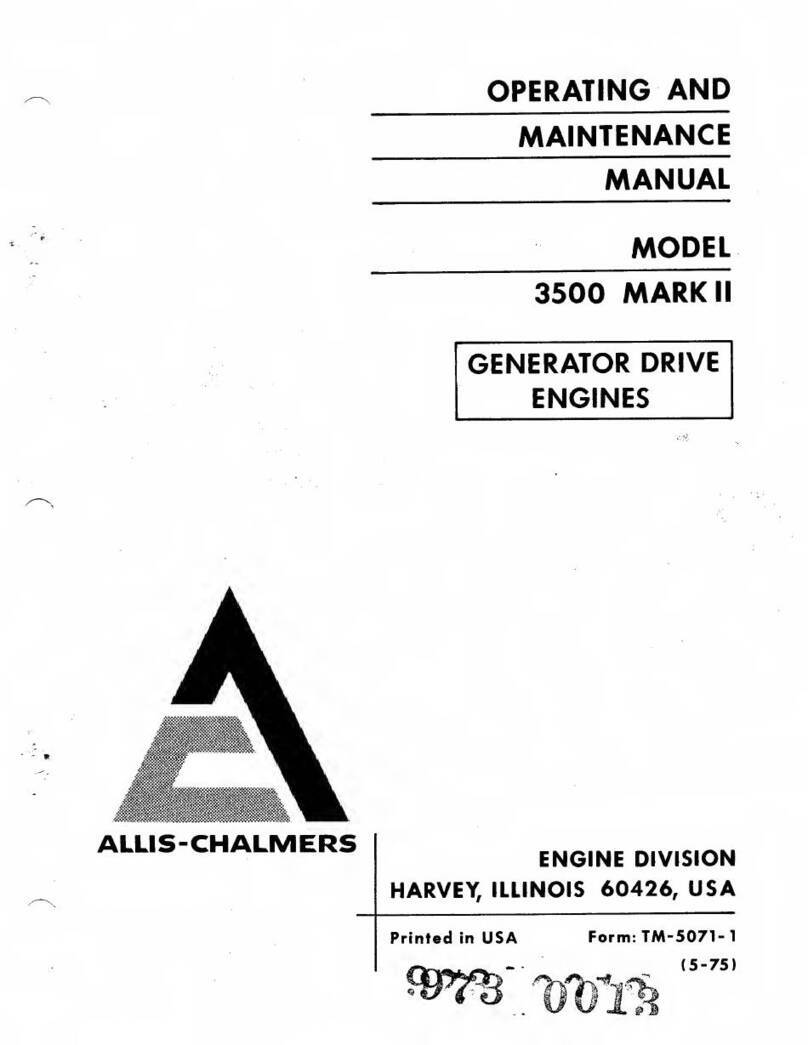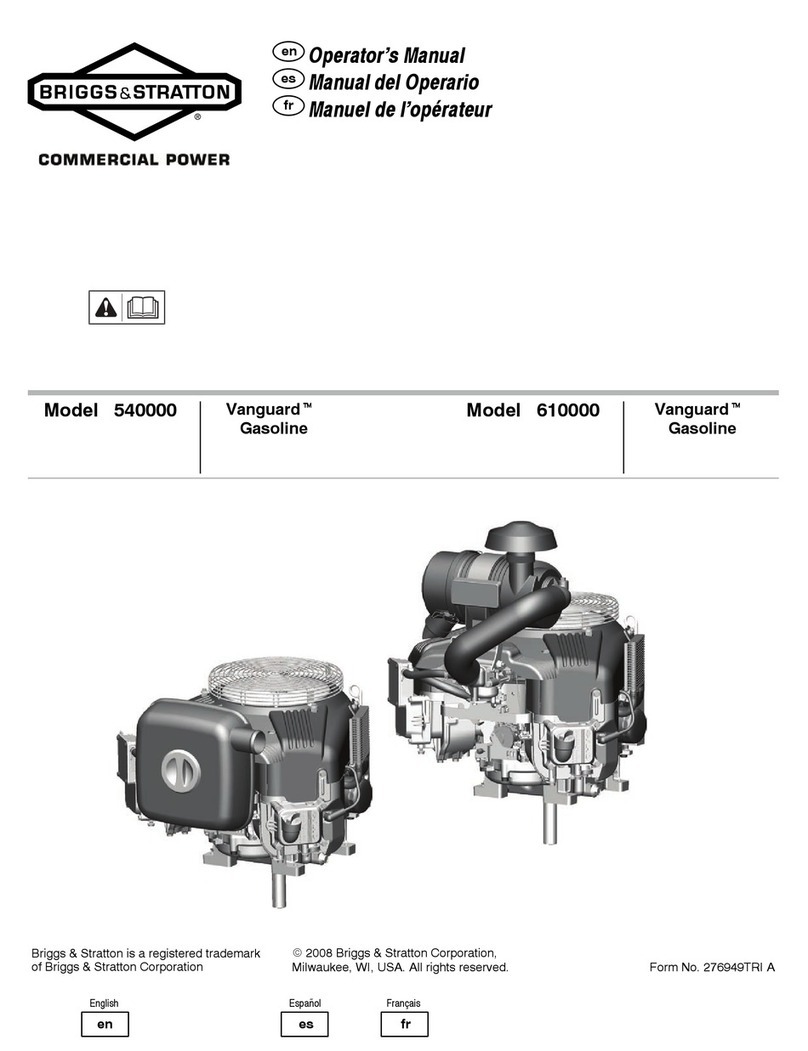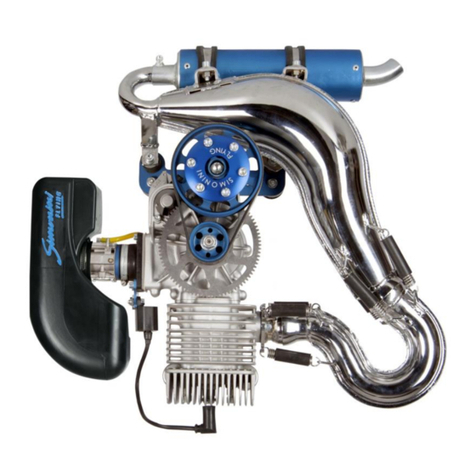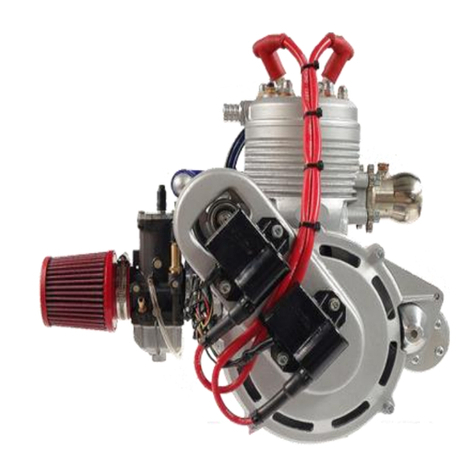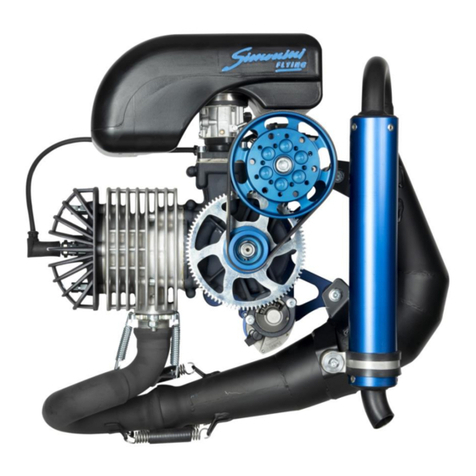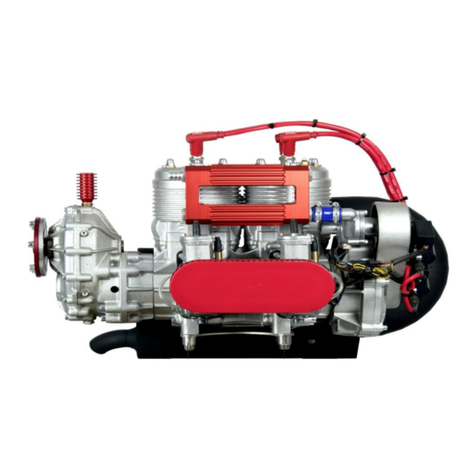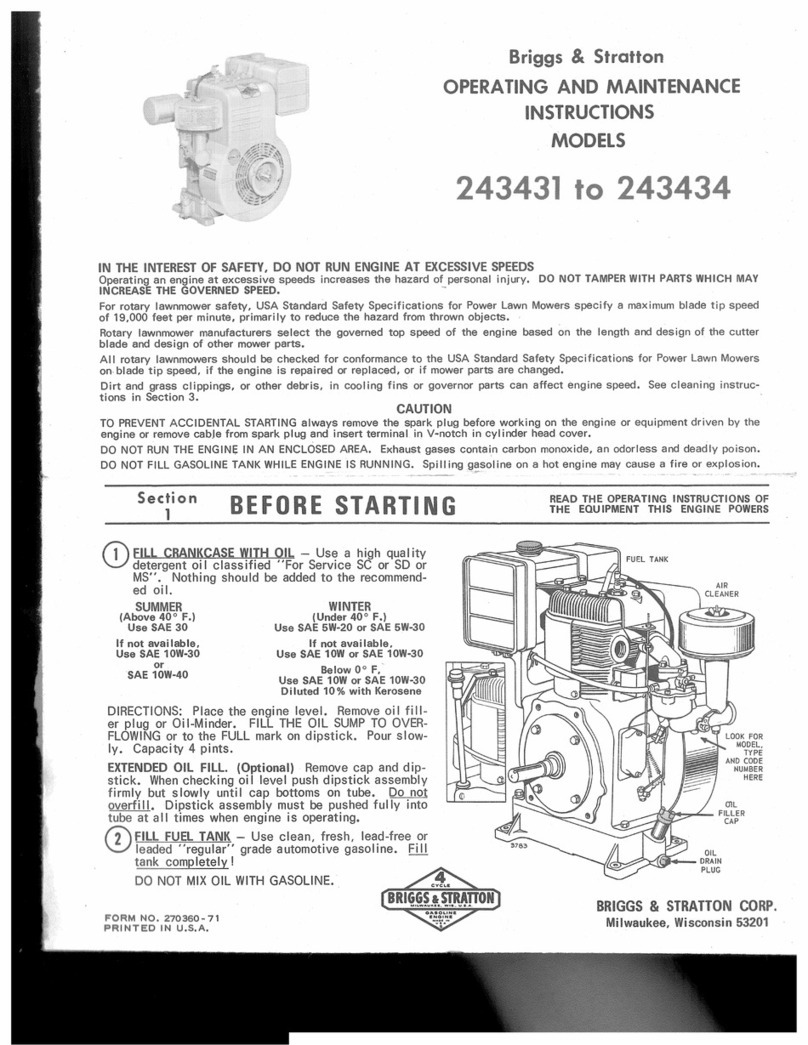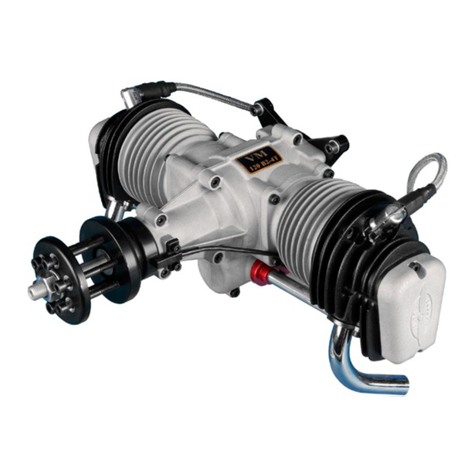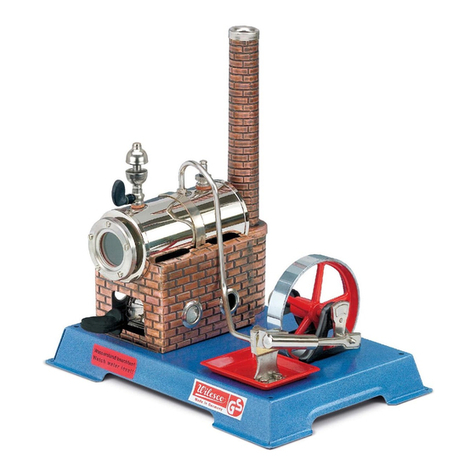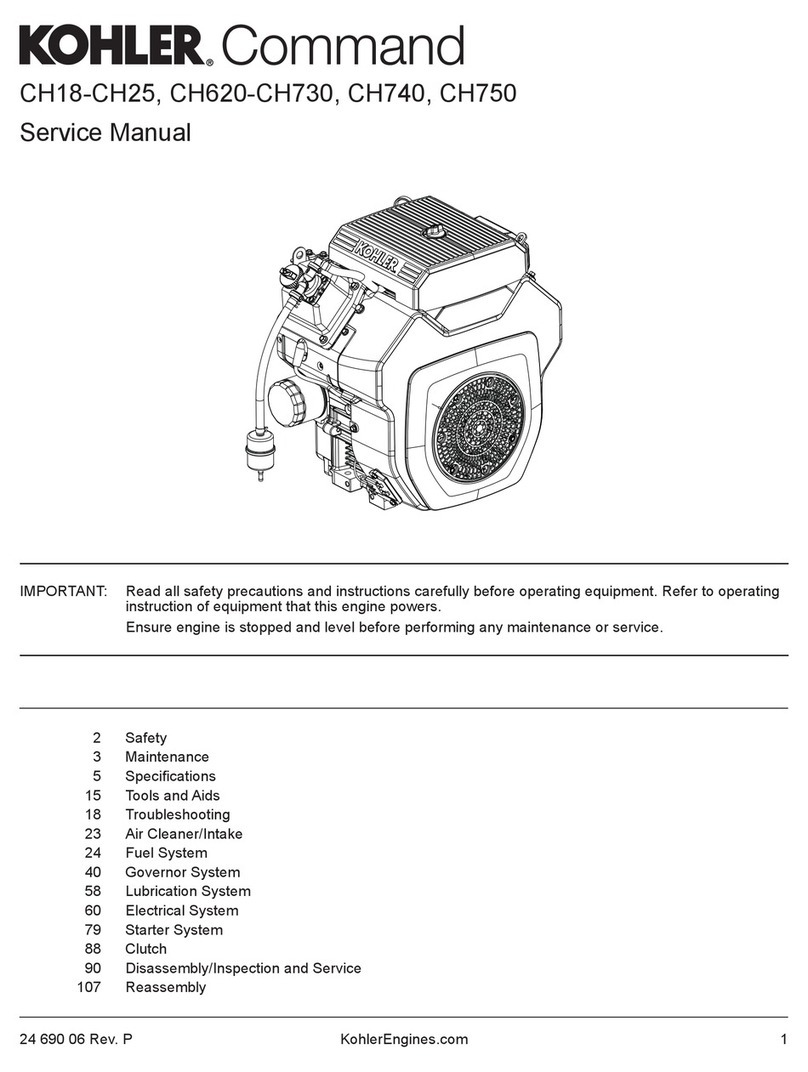
10
Each time you use the engine, remember to perform routine checks pre-start-up:
• Check the silent block condition in complete integrity
• Make sure the exhaust does not present any cracks
• Ensure that the propeller does not present cracks or dents
• Make sure you have enough fuel, according to the duration of intended use of the
engine.
• Check that the electrical system and cables do not show abrasions or disruption.
• Check that there are no screws or parts loosened.
BELT TENSION
WARNING:CARRY OUT THE OPERATIONS WITH THE ENGINE SWITCHED OFF AND COOLED DOWN
During operation, the belt is under strain and wear and as result, lengthening
occurs, which could lead to sliding on the pulleys, with a subsequent decrease in
the general engine performance.
To restore the proper tension, loosen the screw M8 (No. 39) on the foot of the
engine which fastens the pulley can, turn screw M12 (n°32) anti-clock wise using
force of 1.8 Kgm and then re-tighten screw M8 (n°39)
INTERVENTIONS EVERY 20 HOURS
• Clean filter carburetor
• Clean fuel filter
• Check the belt tension and condition
• Lubricate the ball joint of the muffler
INTERVENTIONS EVERY 60 HOURS
• Replace the engine and exhaust silent blocks
• Replace the transmission belt
• Check the status of the intake manifold rubber
• Replace the exhaust pipe sound-absorbent material
• Check the electrode gap spark-plug: if it is over 0.6 mm, change the spark plug
• Rubber components such as belt transmission, silent block, intake manifold and
depression tube may be damaged by atmospheric agents. Their durability can
therefore be different from what is reported, you should therefore check their
condition and provide a possible replacement even outside the agreed time.
















